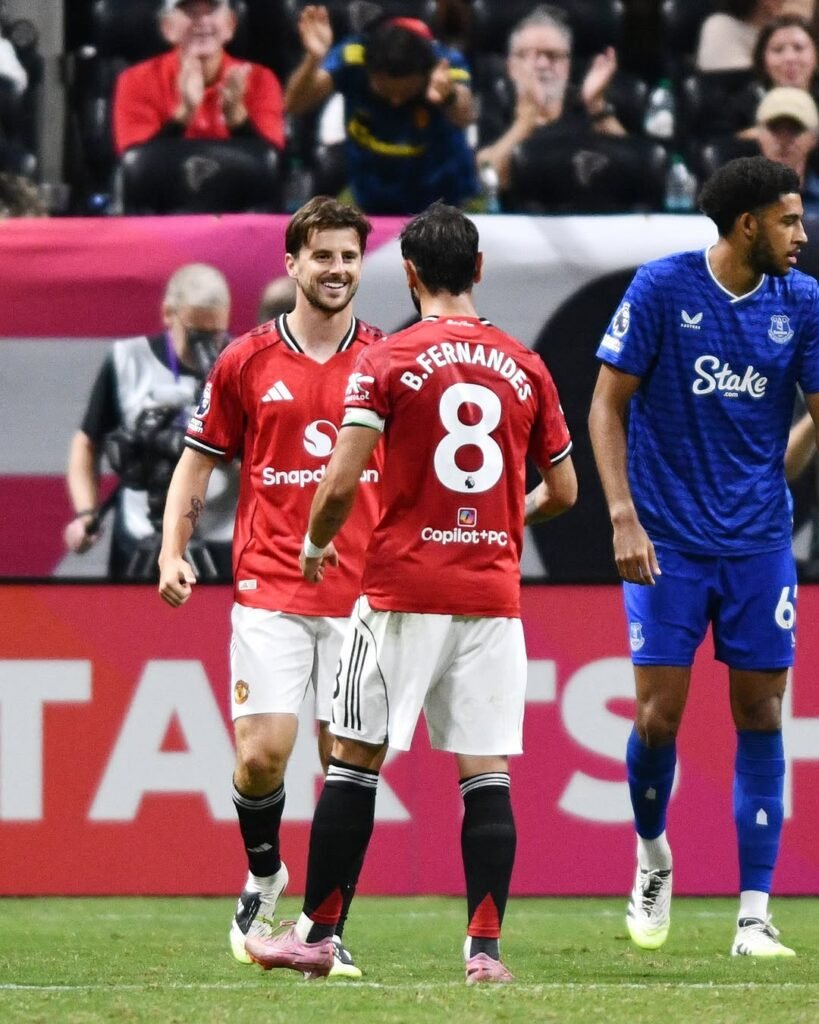Manchester United’s summer transfer window in 2025 has generated major excitement and plenty of debate among fans and pundits alike. After a season where the team scored just 44 league goals—their lowest top-flight tally since the 1970s—the Old Trafford hierarchy has acted decisively, placing goal-scoring talent and squad refreshment at the heart of their spending strategy. With new manager Ruben Amorim at the helm and the summer transfer window closing on September 1, United’s activity stands out not only for the money spent but also for the pivotal names moving in and out of the squad.
Major Arrivals: Breaking the Bank for Goals
Manchester United’s forward line has undergone one of its biggest overhauls in years. The headline signing is Benjamin Sesko from RB Leipzig. United agreed to pay £74million up front, with easy-to-reach add-ons bringing the total package closer to £85million (€100million). Sesko flew to the UK for his medical after rejecting better financial terms from Newcastle, favouring the project on offer at Old Trafford. The 22-year-old Slovenian striker is expected to lead the line for years to come and is being hailed as the centrepiece of Amorim’s new attacking vision.
Two more forward signings have bolstered the attack: Matheus Cunha joined from Wolves in a £62.5million deal, while Bryan Mbeumo arrived for £71million from Brentford. Cunha, a hard-working Brazilian attacker, brings energy and versatility, while Mbeumo adds creativity and width—directly addressing weaknesses seen last season.
Diego Leon also joined from Cerro Porteño, marking United’s continued interest in South American talent. Altogether, the club’s spending on forwards this window exceeds £200million—a clear statement of intent to remedy last season’s attacking shortfall.
Midfield Focus: Attention Turns to Carlos Baleba
While much attention has been paid to the front line, Manchester United’s midfield is under close scrutiny. Captain Bruno Fernandes, recently repositioned in a deeper midfield role by Ruben Amorim, remains integral. However, debate lingers about the balance between his creativity and the need for defensive cover in central areas. Many experts have questioned whether Fernandes’ style truly fits Amorim’s more disciplined system.
To address this, United are targeting Brighton’s Carlos Baleba. Known for his box-to-box energy, stamina, and ball-winning skills, Baleba is the type of midfielder United currently lack. Brighton, however, have signalled they will demand a significant fee, drawing comparisons to the £115million Chelsea paid for Moises Caicedo two years ago. With United also mindful of Premier League profit and sustainability rules, a move for Baleba is likely contingent on further player sales this month.
Outgoings: High-Profile Exits and a Youthful Shake-Up
Notable departures include Marcus Rashford, who has joined Barcelona on loan for the 2025/26 season—a move that marks a major moment after years as a United mainstay. Another significant possible exit is Alejandro Garnacho, the Argentine winger reportedly attracting determined interest from Chelsea. United have set a £50million asking price, and all signs suggest a transfer could happen before the window closes. Manager Amorim has acknowledged Garnacho’s desire for a “new challenge” and admitted the club is preparing for life without him.
Other senior departures include Christian Eriksen and Victor Lindelof, who left at the end of their contracts, and Jonny Evans, who has retired from playing and taken up a head of loans and pathways role at the club.
A series of loans and releases also trimmed the squad, with prospects like Dan Gore (Rotherham), Ethan Wheatley (Northampton), and Joe Hugill (Barnet) gaining experience elsewhere. Defender Sam Murray completed a permanent switch to Carlisle United.
Financial Tally: Ambition Meets Prudence
With a net spend already exceeding £200million and further moves possible, Manchester United’s summer is among the most expensive in Europe. The club’s leadership maintains that incomings are only possible if funds are raised through further outgoings, as meeting profit and sustainability rules is a major off-field concern. The focus is on moving on those who are training separately from the main squad, including Tyrell Malacia and Antony, whose futures remain uncertain.
Managerial Vision and Expert Insights
Ruben Amorim’s tactical changes have been scrutinised by analysts. His reliance on advanced wing-backs and inside forwards means greater demand on central midfielders to defend and distribute effectively. Amorim continues to publicly back Fernandes’ ability to cover midfield duties, citing his endurance and intelligence, but recognises the need for options with greater tackling and positional discipline.
The club’s decision to tie down several key senior players on new deals while overhauling parts of the squad has drawn praise from some quarters, who see a more coherent rebuild than in previous years.
Conclusion
With new firepower in place and further tweaks likely, Manchester United enter the new campaign with both renewed optimism and immense pressure. The competition for European places will be fierce, and the club’s stated ambition is to return to the Champions League at the first attempt. Supporters are hoping the sizable investment will translate into on-field results and that the balance between attacking intent and structural solidity can finally be found.
The next three weeks ahead of the 1 September deadline promise further twists. Whether through another marquee signing or a dramatic late departure, United’s transfer market performance could yet define their fixture list and fortunes in the coming season. One thing is clear: there’s a new sense of intent at Old Trafford, and all eyes will be on how rapidly the new arrivals settle and whether Amorim can deliver on the club’s high ambitions.
Read More: Click here

